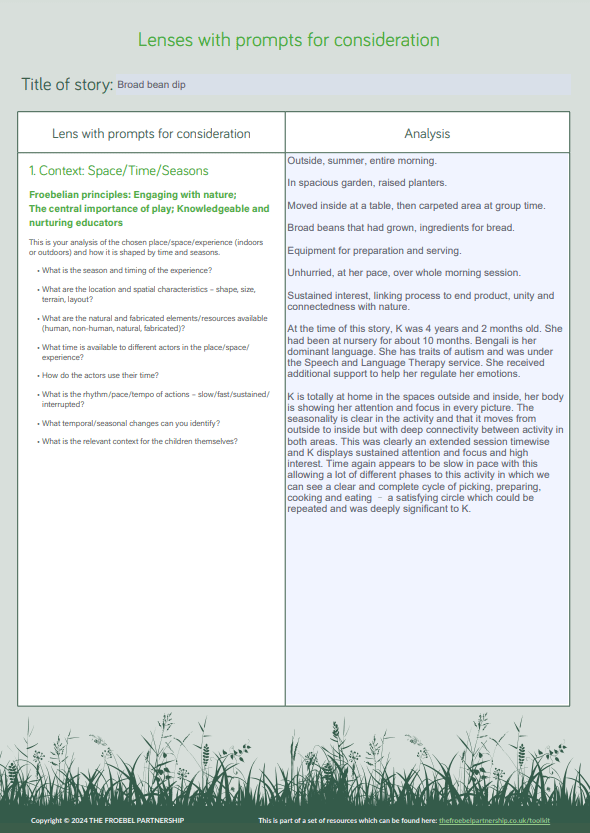Capturing transformations for children, adults, practice and pedagogy
The examples given below show the different ways the Reflection with Guidance tool can be used.
Some are written stories with accompanying Reflection with Guidance templates completed by a small group of educators.
Others are recordings of educators using the prompts on the Reflection with Guidance tool to discuss a photo or a video or a written narrative observation (learning story).
Other completed Reflection with Guidance templates show how educators have used them to reflect on a video of children or some photos.
Consider transformations in the broadest sense of the word, recognising development is holistic. Flourishing is a key consideration and includes both emotional wellbeing and the development of positive learning dispositions. Self-reflection, for both educators and children, makes this learning visible. As well as holistic development transformations can also be considered in relation to national educational guidance.
Froebel believed that “through studying children, adults could gain a deeper understanding of their own lives as well as those of their children.”
(Tovey, 2020)
Reflecting on V’s transformations
Reflecting on V’s transformations
Listen to some educators reflecting on the transformations over time for one child for whom English is an additional language. What was it that supported his wellbeing and involvement?
Child C and the blocks
Child C and the blocks
Listen to some educators reflecting on the transformations that occurred through engaging in block play.









